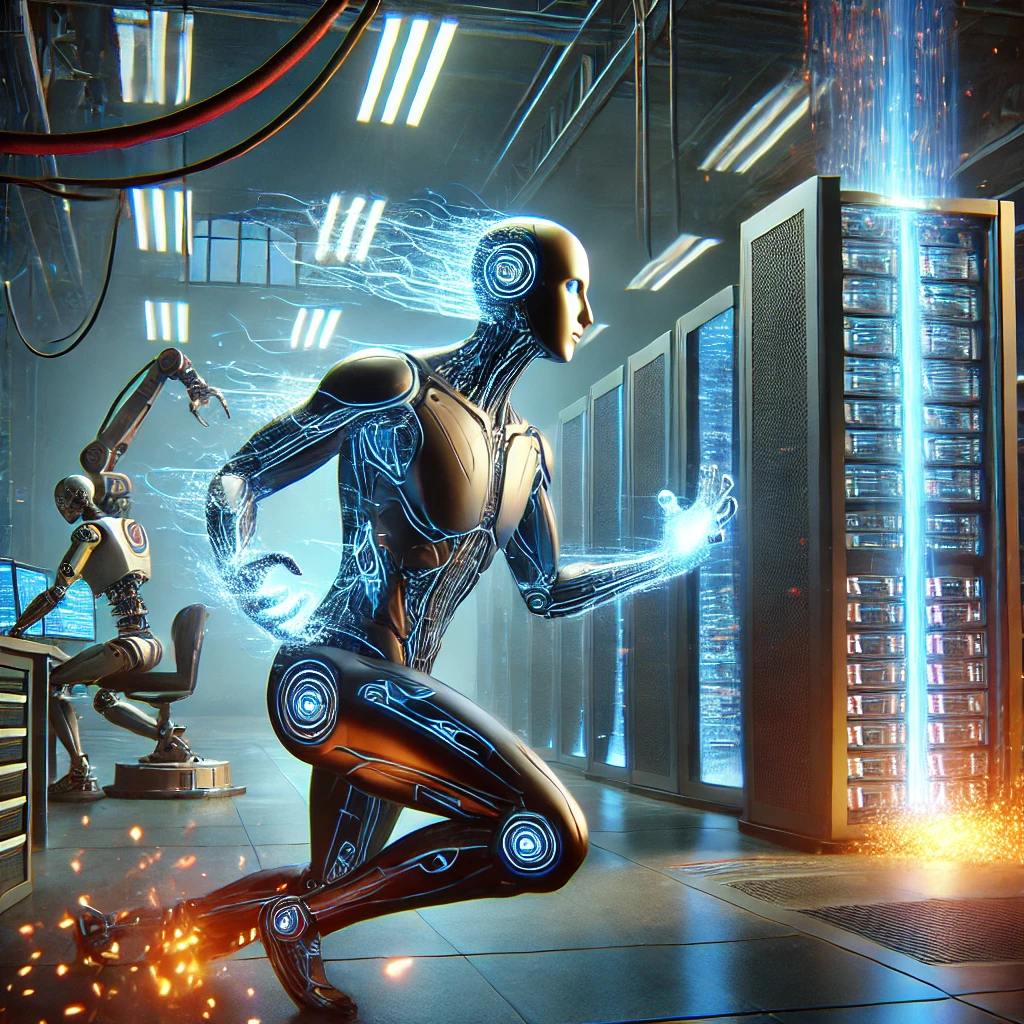A Journey Through History, Fears, and Potential Benefits
Introduction
Artificial Intelligence (AI) has long been a staple of science fiction, inspiring awe and fear in equal measure. From the early visions of sentient machines in classic literature to the advanced AI technologies shaping our world today, the journey of AI has been both fascinating and tumultuous. In this post, we will explore the sci-fi vision for AI, trace the history of its development, delve into the fears surrounding its proliferation, and highlight the potential benefits it promises for the future.
The Sci-Fi Vision for AI
The concept of AI has captivated imaginations for decades, with early science fiction works laying the groundwork for how we perceive intelligent machines. Iconic books like Isaac Asimov’s “I, Robot” and films like “Blade Runner” and “The Matrix” present AI as both a marvel of human ingenuity and a potential harbinger of doom. These narratives often explore themes of autonomy, ethics, and the nature of consciousness, posing questions about what it means to be human and the role AI might play in our future.
The History of AI Development
The journey of AI from fiction to reality has been marked by significant milestones:
- Early Beginnings: The concept of machines simulating human intelligence dates back to ancient myths and mechanical automatons. However, the formal study of AI began in the mid-20th century with pioneers like Alan Turing, who proposed the idea of a “universal machine” capable of performing any computational task.
- The Dartmouth Conference (1956): Considered the birthplace of AI as a field, this conference brought together leading scientists to discuss the possibilities of creating intelligent machines. The term “Artificial Intelligence” was coined here.
- Early AI Research: The 1950s and 1960s saw the development of early AI programs, such as the Logic Theorist and the General Problem Solver. These programs demonstrated that machines could perform tasks previously thought to require human intelligence.
- AI Winters: The history of AI is marked by periods of high expectations followed by disillusionment, known as “AI winters.” Funding and interest waned due to the slow progress and limited capabilities of early AI systems.
- Modern AI: The resurgence of AI began in the late 20th and early 21st centuries, driven by advances in machine learning, neural networks, and computational power. Landmark achievements, such as IBM’s Deep Blue defeating world chess champion Garry Kasparov and the development of self-driving cars, showcased the potential of AI.
Fears Surrounding AI Proliferation
Despite its promise, AI’s proliferation has sparked significant fears and ethical concerns:
- Job Displacement: The automation of tasks previously performed by humans raises concerns about widespread job loss and economic inequality.
- Privacy and Surveillance: AI technologies, particularly those used in surveillance and data analysis, pose risks to individual privacy and civil liberties.
- Bias and Discrimination: AI systems can perpetuate and amplify existing biases in data, leading to unfair and discriminatory outcomes.
- Autonomous Weapons: The development of AI-powered weapons raises ethical questions about the use of lethal force and the potential for unintended consequences.
- Superintelligence: The hypothetical scenario of AI surpassing human intelligence (often referred to as “the singularity”) evokes fears of losing control over advanced AI systems.
Potential Benefits of AI
While the fears are valid, the potential benefits of AI are vast and transformative:
- Healthcare: AI can revolutionize healthcare by enabling early diagnosis, personalized treatments, and efficient management of medical data.
- Education: Intelligent tutoring systems and personalized learning platforms can enhance educational outcomes and make learning more accessible.
- Environmental Impact: AI can aid in addressing climate change by optimizing energy usage, predicting environmental changes, and managing natural resources.
- Economic Growth: AI-driven innovations can boost productivity, create new industries, and drive economic growth.
- Improved Quality of Life: From smart home technologies to advanced transportation systems, AI can enhance the quality of life by making everyday tasks more efficient and convenient.
Conclusion
The vision of AI, as portrayed in science fiction, has both inspired and cautioned humanity about the future of intelligent machines. As we continue to develop and integrate AI into our lives, it is crucial to address the ethical and societal challenges it presents. By harnessing the potential benefits while mitigating the risks, we can create a future where AI serves as a powerful tool for advancing human well-being and progress.


